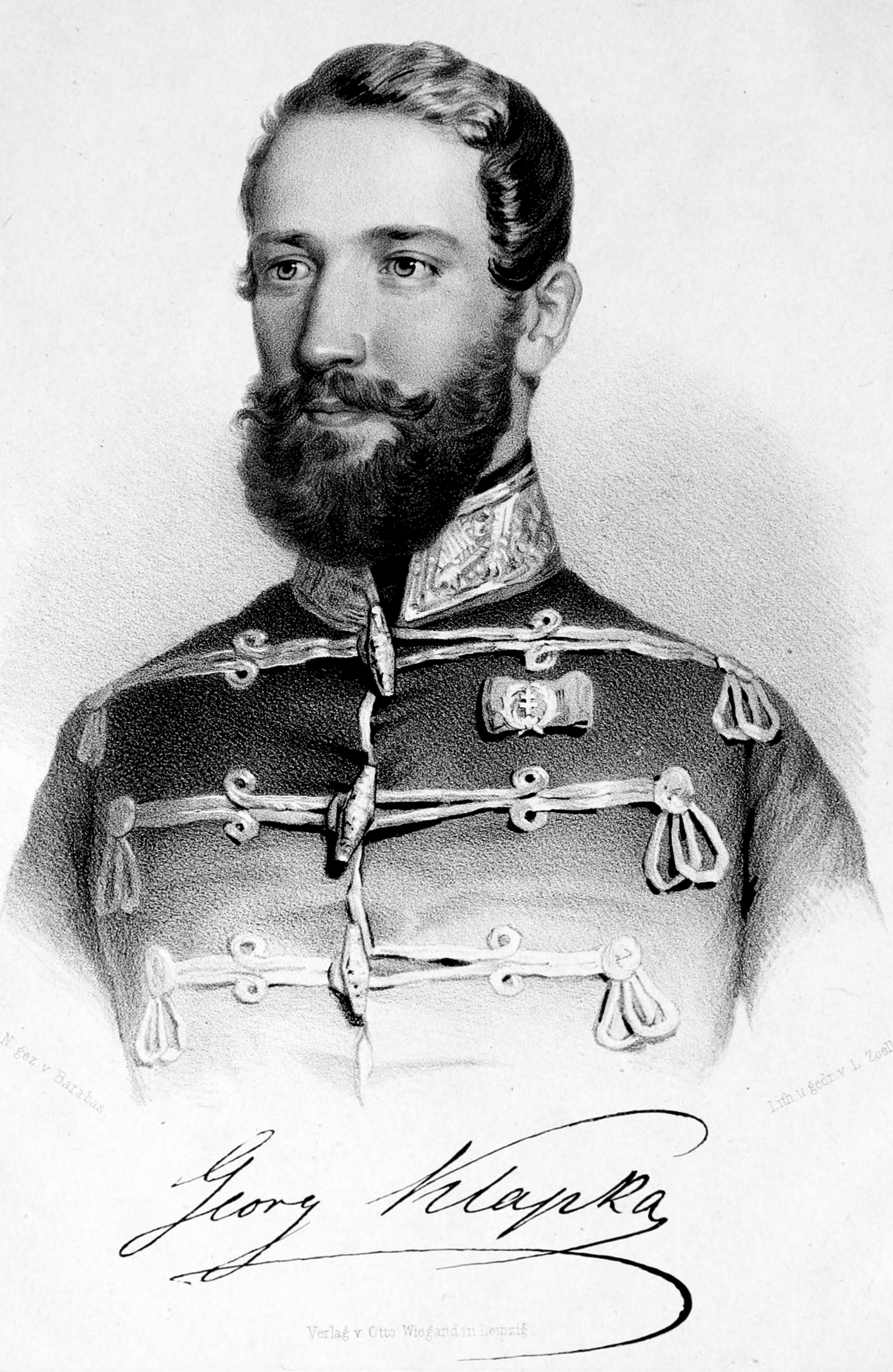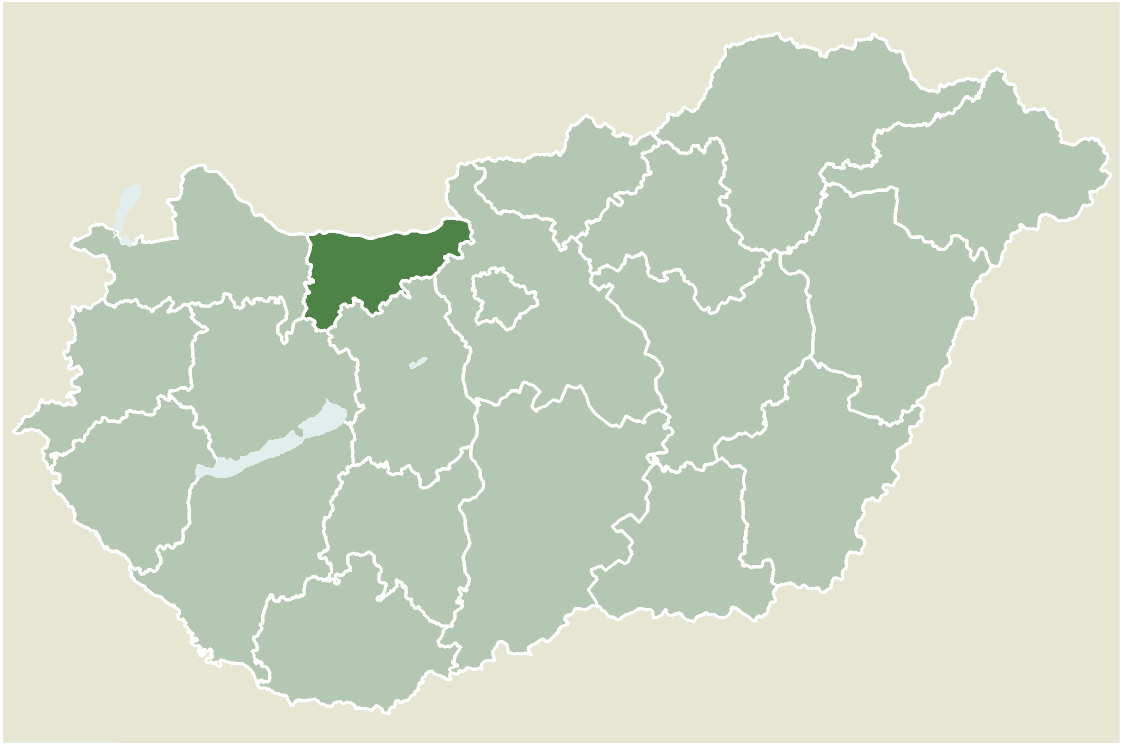|
Fourth Battle Of Komárom (1849)
The Fourth Battle of Komárom was fought in 30 July and 3 August 1849 between the Hungarian garrison of the fortress of Komárom led by General György Klapka and the besieging Austrian army led by Lieutenant field marshal Anton Freiherr Csorich von Monte Creto. Thanks to the capturing, by a Hungarian detachment of Hussars, of a statement containing the number of the besieging Austrian II. corps, Klapka understood, that he actually has numerical superiority over the besiegers. So in two sorties made on 30 July and 3 August he managed to crush their siege on the northern, then also on the southern section of the fortress, chasing them towards West, and causing them heavy losses. Thanks to this victory Klapka liberated the region between Komárom and Győr, planning to attack Austria, when he learned about the surrender of the Hungarian main troops from 13 August, and as result of this, he retreated with his troops in Komárom. Background When, after the battle of Komárom fro ... [...More Info...] [...Related Items...] OR: [Wikipedia] [Google] [Baidu] |
Hungarian Revolution Of 1848
The Hungarian Revolution of 1848 or fully Hungarian Civic Revolution and War of Independence of 1848–1849 () was one of many European Revolutions of 1848 and was closely linked to other revolutions of 1848 in the Habsburg areas. Although the revolution failed, it is one of the most significant events in Hungary's modern history, forming the cornerstone of modern Hungarian national identity. In April 1848, Hungary became the third country of Continental Europe (after France (1791), and Belgium (1831)) to enact law about democratic parliamentary elections. The new suffrage law (Act V of 1848) transformed the old feudal parliament ( Estates General) into a democratic representative parliament. This law offered the widest suffrage right in Europe at the time. The crucial turning point of events was when the new young Austrian monarch Franz Joseph I arbitrarily revoked the April laws (ratified by King Ferdinand I) without any legal competence. This unconstitutional act irrever ... [...More Info...] [...Related Items...] OR: [Wikipedia] [Google] [Baidu] |
Marcelová
Marcelová ( hu, Marcelháza, Hungarian pronunciation:) is a village and municipality in the Komárno District in the Nitra Region of south-west Slovakia. Geography The village lies at an altitude of 112 metres and covers an area of 35.75 km2. History In the 9th century, the territory of Marcelová became part of the Kingdom of Hungary. In historical records, the village was first mentioned in 1245. After the Austro-Hungarian army disintegrated in November 1918, Czechoslovak troops occupied the area, later acknowledged internationally by the Treaty of Trianon. Between 1938 and 1945, Marcelová once more became part of Miklós Horthy's Hungary through the First Vienna Award. From 1945 until the Velvet Divorce, it was part of Czechoslovakia. Since then, it has been part of Slovakia. Demographics Marcelová has a population of about 3,825 people. The village is about 88% Hungarian, 10% Slovak and 2% Romany. Facilities The village has a public library, and a football ... [...More Info...] [...Related Items...] OR: [Wikipedia] [Google] [Baidu] |
Chotín
Chotín ( hu, Hetény, Hungarian pronunciation:) is a village and municipality in the Komárno District in the Nitra Region of south-western Slovakia. Geography The village lies at an altitude of 109 metres and covers an area of 20.425 km². It has a population of about 1,410 people. History In the 9th century, the territory of Chotín became part of the Kingdom of Hungary. In historical records the village was first mentioned in 1138. After the Austro-Hungarian army disintegrated in November 1918, Czechoslovak troops occupied the area, later acknowledged internationally by the Treaty of Trianon. Between 1938 and 1945 Chotín once more became part of Miklós Horthy's Hungary through the First Vienna Award. From 1945 until the Velvet Divorce, it was part of Czechoslovakia. Since then it has been part of Slovakia. Demographics The village is about 87% Hungarian, 12.5% Slovak. Facilities The village has a public library, a gym and a football pitch. Genealogical resources ... [...More Info...] [...Related Items...] OR: [Wikipedia] [Google] [Baidu] |
Hurbanovo
Hurbanovo (until 1948 ''Stará Ďala'', hu, Ógyalla, german: Altdala) is a town and large municipality in the Komárno District in the Nitra Region of south-west Slovakia. In 1948, its Slovak name was changed to Hurbanovo, named after Slovak writer Jozef Miloslav Hurban. History In historical records the town was first mentioned in 1329. Geography The town lies at an elevation of 115 metres and covers an area of 59.943 km2. Hurbanovo is situated on the climatically warmest location of the Podunajská nížina lowland, and it is located on the left bank of the Žitava river in the area with an altitude around 115 metres above the sea level. Demographics According to the 2021 census, the municipality had 7,467 inhabitants. 3,780 (or 50,62 %) of inhabitants were Slovaks, 3,038 (or 40,69 %) Hungarians, 179 (2,4 %) Roma, 28 (0,37 %) Czechs, 468 others and unspecified. Government The town has a birth registry, a police force and a tax office. Facilities The town ... [...More Info...] [...Related Items...] OR: [Wikipedia] [Google] [Baidu] |
Martovce
Martovce ( hu, Martos, Hungarian pronunciation:) is a village and municipality in the Komárno District in the Nitra Region of south-west Slovakia. Geography The village lies at an altitude of 112 metres and covers an area of 19.964 km². It has a population of about 760 people. History In the 9th century, the territory of Martovce became part of the Kingdom of Hungary. In historical records the village was first mentioned in 1438. After the Austro-Hungarian army disintegrated in November 1918, Czechoslovak troops occupied the area, later acknowledged internationally by the Treaty of Trianon. Between 1938 and 1945 Martovce once more became part of Miklós Horthy's Hungary through the First Vienna Award. From 1945 until the Velvet Divorce, it was part of Czechoslovakia. Since then it has been part of Slovakia. Ethnic communities The village is about 91% Hungarian, 9% Slovak. Facilities The village has a public library, and a football pitch A football pitch (also ... [...More Info...] [...Related Items...] OR: [Wikipedia] [Google] [Baidu] |
Kameničná
Kameničná ( hu, Keszegfalva, Hungarian pronunciation:) is a village and municipality in the Komárno District in the Nitra Region of southwest Slovakia. Geography The village lies on the Váh River, at an altitude of 110 metres and covers an area of 34.512 km². It has a population of about 1830 people. History In the 9th century, the territory of Kameničná became part of the Kingdom of Hungary. In historical records the village was first mentioned in 1482. After the Austro-Hungarian army disintegrated in November 1918, Czechoslovak troops occupied the area, later acknowledged internationally by the Treaty of Trianon. Between 1938 and 1945 Kameničná once more became part of Miklós Horthy's Hungary through the First Vienna Award. From 1945 until the Velvet Divorce, it was part of Czechoslovakia. Since then it has been part of Slovakia. Ethnicity The village is about 79% Hungarian, 20% Slovak, and 1% Czech. Facilities The village has a public library, a cinema, ... [...More Info...] [...Related Items...] OR: [Wikipedia] [Google] [Baidu] |
Zlatná Na Ostrove
Zlatná na Ostrove ( hu, Csallóközaranyos, ) is a village and municipality in the Komárno District in the Nitra Region of south-west Slovakia. Geography The village lies at an altitude of 120 metres and covers an area of 35.407 km². It has a population of about 2555 people. History In the 9th century, the territory of Zlatná na Ostrove became part of the Kingdom of Hungary. In historical records the village was first mentioned in 1267. After the Austro-Hungarian army disintegrated in November 1918, Czechoslovak troops occupied the area, later acknowledged internationally by the Treaty of Trianon. Between 1938 and 1945 Zlatná na Ostrove once more became part of Miklós Horthy's Hungary through the First Vienna Award. From 1945 until the Velvet Divorce, it was part of Czechoslovakia. Since then it has been part of Slovakia. Ethnicity The village is about 91% Hungarian, 8% Slovak with minorities. Facilities The village has a public library and a football pit ... [...More Info...] [...Related Items...] OR: [Wikipedia] [Google] [Baidu] |
Žitný Ostrov
Žitný ostrov (Rye Island), also called Veľký Žitný ostrov (Great Rye Island), (german: Große Schüttinsel or Great Schütt Island, hu, Csallóköz) to differentiate it from Malý Žitný ostrov (Small Rye Island) (german: Kleine Schüttinsel or Little Schütt Island, hu, Szigetköz), is a river island in southwestern Slovakia, extending from Bratislava to Komárno. It lies between the Danube, its tributary Little Danube and Váh. The island is a major part of the Danubian Flat. It is the biggest river island in Europe, with an area of , measuring in length and in width. The main towns on the island are Komárno (Révkomárom), Dunajská Streda (Dunaszerdahely) and Šamorín (Somorja). Boroughs of Bratislava, Vrakuňa and Podunajské Biskupice are also located on the island. The Slovnaft refinery is also located on the island. The island is the biggest drinking water reservoir in Slovakia, and one of the biggest in Europe as well. Because of its warm climate, good s ... [...More Info...] [...Related Items...] OR: [Wikipedia] [Google] [Baidu] |
Dunaalmás
Dunaalmás is a village in Komárom-Esztergom county, Hungary Hungary ( hu, Magyarország ) is a landlocked country in Central Europe. Spanning of the Pannonian Basin, Carpathian Basin, it is bordered by Slovakia to the north, Ukraine to the northeast, Romania to the east and southeast, Serbia to the .... External links Street map (Hungarian) Populated places in Komárom-Esztergom County {{Komarom-geo-stub ... [...More Info...] [...Related Items...] OR: [Wikipedia] [Google] [Baidu] |
Mocsa
Mocsa is a village in Komárom-Esztergom county, Hungary. Early history The village has existed for at least 770 years; it is first mentioned in 1237-1240 under the name of Mocha in the notes of ''Albeus'', dean of Nitra, who had been asked by Béla IV of Hungary to catalogue the territories of the villages in the area. During the Árpád Dynasty, the village was a property of the King; income from the land was used to maintain the Queen's court. The King's hunters and falconers lived in Mocsa. In 1291, Fennena of Kujavia, the first wife of Andrew III of Hungary, granted the village's territory to Lodomer, the Archbishop of Esztergom. From this point on, the land was largely the property of the bishops. During the reign of Béla IV, Mocsa had about four hundred and fifty residents. The villages in the area were mostly razed to the ground during the Tatar invasions, but the survivors helped to repopulate Mocsa by grouping together. Through the centuries the village was a ... [...More Info...] [...Related Items...] OR: [Wikipedia] [Google] [Baidu] |

